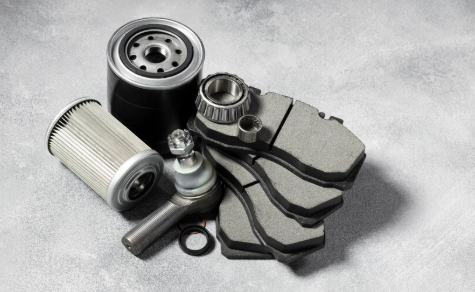Business
Passenger Rights: What to Do If You’re Injured in Someone Else’s Car

Imagine this. You’re in the passenger seat, chatting with a friend, or maybe scrolling through your phone, when suddenly the car jerks violently. The sound of crunching metal fills the air, and before you know it, you’re in the middle of an accident.
Here’s the problem: You weren’t driving. You had no control over what happened. But now you’re left with injuries, medical bills, and a whole lot of questions.
Who pays for your treatment? Can you sue the driver? How do you deal with insurance?
Let’s discuss your legal rights in these situations and answer the questions you might have.
Are Passengers Considered Victims?
If you were the passenger, are you automatically a victim?
The short answer? Usually, yes.
Passengers are rarely ever responsible for car accidents. This means that your claim for injuries is far more straightforward than those of drivers.
In most cases, passengers are considered innocent third parties, and they have the right to seek compensation for the party who’s at fault. However, that doesn’t mean insurance companies will make things any easier.
There are still exceptions. For instance, if you get into a car with a driver who you know is drunk, high, or drives recklessly, insurance companies can say that you assumed the risk and refuse to compensate you.
This doesn’t mean that you won’t get compensated at all, though. It just means the process will be more complicated.
Who Pays the Medical Bills?
This is where things start to get tricky. There’s no single answer to this question.
Usually, your medical bills could be covered by:
- The driver’s insurance. If the driver of the car (that you were in) was responsible for the accident, their insurance should cover your injuries.
- The other driver’s insurance. If another driver was the one who caused the accident, their insurance should compensate you.
- Your own insurance. If you have medical insurance or Personal Injury Protection (PIP), it might cover your medical expenses regardless of who was at fault.
Determining who needs to pay for your injuries also depends on the state you live in. For example, Florida is a no-fault state, which means you can only file a claim with your own insurance company in case of an accident or personal injury.
However, places like California operate on an at-fault system, where the responsible party’s insurance pays for your medical expenses. So, if you live in a city like Walnut Creek, you can get Walnut Creek car accident attorneys to step in to fight for your claim.
Should You Sue the Driver?
One of the biggest concerns passengers have is if they can sue the driver they were with, especially if it was a friend or a family member.
Here’s the thing: If the driver of the car you were in was at fault, their insurance should cover your injuries. Filing a claim against their insurance isn’t a personal attack – it’s just how the system works.
And you’re not really suing the driver directly. You’re simply using their insurance coverage as intended.
It’s an awkward situation, no doubt. But remember, you’re not blaming your friend but just making sure you get the care that you need.
But what if the driver doesn’t have insurance? Another scenario is that their policy doesn’t fully cover your medical bills. This is when you might have to consider legal action to recover your losses.
What If the Driver Was Uninsured?
If the driver of the car you were in didn’t have insurance (or didn’t have enough coverage), you still have options:
- Uninsured/Underinsured Motorist (UM/UIM) Coverage: If you have UM/UIM coverage on your own car insurance policy, it might cover you even though you weren’t driving.
- Health Insurance: Your own health insurance can help with medical bills.
- Legal Action: In some cases, suing the at-fault driver personally might be an option, though their ability to pay is a factor.
If you find yourself in this situation, consulting an attorney is crucial. They can help explore every available option, so you’re not left covering expenses out of pocket.
Steps to Take Immediately After the Accident
If you’re injured as a passenger, your best bet for getting compensated is to act fast. Here’s what you should do:
Call 911
Even if the driver wants to “handle things privately,” always report the accident. A police report can be crucial evidence later.
Get Information from Everyone Involved
Make sure you collect:
- The names, contact details, and insurance information of both drivers.
- The license plate numbers of all vehicles involved.
- Contact details of any witnesses.
Take Photos and Videos
Capture the accident scene, the vehicles, your injuries, and any other relevant details. The more documentation, the better.
Get Medical Attention ASAP
Even if you feel okay, injuries like whiplash or internal damage might not show symptoms right away. Seeing a doctor immediately strengthens your case if you need to file a claim later.
Avoid Saying “I’m Fine” to Insurance Companies
Insurance adjusters will jump on any statement that downplays your injuries. Stick to the facts and consult an attorney before making official statements.
When to Call a Lawyer
While minor accidents with clear liability may not require legal help, there are some situations where calling an attorney is the best move.
Reach out to a lawyer if:
- The insurance company is delaying or denying your claim.
- You suffered serious injuries and need extensive medical treatment.
- The drivers involved are disputing fault.
- The at-fault driver is uninsured or underinsured.
- You’re being pressured to settle for less than you deserve.
A car accident attorney can handle the legal side of things, negotiate with insurance companies, and make sure you get the full compensation you’re entitled to.
Know Your Rights
Being injured in someone else’s car can be confusing and stressful, but you do have rights as a passenger.
Whether it’s filing a claim against the at-fault driver’s insurance, using your own coverage, or seeking legal action when necessary, there are ways to make sure you don’t get stuck with medical bills that aren’t your responsibility.
If the insurance process feels overwhelming, don’t hesitate to get professional help. A car accident attorney can make sure you get the compensation you need while you focus on recovering.
After all, you weren’t driving, so why should you have to pay?
Business
Successful Strategies For Encouraging Community Participation In HOAs

Why Community Participation Matters In HOAs
Active participation is the cornerstone of a healthy homeowners association. The neighborhood flourishes on every level when residents get involved in day-to-day activities and long-term planning. Engaged members tend to look after one another, increasing safety and creating a welcoming atmosphere for newcomers. The research highlighted in data on HOA engagement shows a direct link between high participation and measurable benefits like enhanced property values and reduced disputes. In well-engaged communities, there’s often a shared sense of pride, and improvements get prioritized based on what matters most to residents.
The right systems can make all the difference. Many communities partner with professionals who offer HOA Management services to streamline communications, boost transparency, and introduce tools that simplify volunteer coordination. These services can empower boards by giving them access to platforms that handle logistics efficiently, allowing volunteers to focus on meaningful community-building efforts. When administrative obstacles are reduced, residents are more likely to step up and share their skills, talents, and time in new ways.
Common Barriers To Community Engagement
While involvement brings many rewards, various obstacles can limit broader participation. One persistent barrier is time. Today’s homeowners often balance demanding work schedules, family commitments, and social obligations, leaving little time for additional responsibilities. In some cases, residents aren’t even aware of what the HOA does, let alone how to get involved. Under-advertised meetings and events can allow interested individuals to slip through the cracks. Unfamiliar processes, businesslike meeting agendas, or unfamiliar faces on the board can intimidate people who want to contribute but aren’t sure how to start.
- Busy Schedules: Residents may be unable to attend meetings during working hours or on inconvenient days.
- Lack of Awareness: Not hearing about events or decision-making opportunities until after the fact.
- Feeling Unwelcome or Intimidated: They may fear that their opinions may not matter or be uncertain about the value of their input.
- Language and Accessibility: Information isn’t always available in multiple languages or accessible formats, limiting inclusivity.
Pinpointing these stumbling blocks and addressing them directly isn’t just helpful—it’s vital for any HOA that wants to draw more people into the process. Communities that actively seek out the reasons behind low engagement are better positioned to foster lasting and genuine involvement.
Transparent And Open Communication Tactics
Good communication is about more than posting dates and times on a bulletin board. It’s about inviting residents to join the conversation and letting them know how to participate. Effective boards go beyond the basics by issuing routine updates via multiple channels—newsletters, group texts, email blasts, and even neighborhood social media. This ensures information reaches residents in the ways they’re most likely to see it.
Tips For Effective Communication:
- Use simple language to make updates clear, concise, and easy to digest—no jargon required.
- Leverage technology to send reminders at different times and across various platforms.
- Translate materials and offer multilingual communications to better accommodate everyone in the community.
- Build interactive feedback loops through online surveys, comment forms, and calls for questions before meetings.
Communities that prioritize open dialogue are naturally more welcoming. When questions are answered and ideas are acknowledged, people feel their participation will have an impact and that their voices truly matter.
Making Meetings Accessible And Welcoming
HOA meetings should foster enthusiasm and lower the barrier to entry for all interested residents. Adjusting meeting times between evenings, weekends, and even mornings can accommodate different schedules and family arrangements. As recent HOA meeting research recommended, incorporating in-person and online virtual attendance options helps people participate even if they’re away or unable to leave home. A welcoming environment does wonders: offer coffee, snacks, or even supervised activities for kids to encourage broader attendance.
Additionally, clarify the agenda beforehand and maintain an atmosphere where everyone is comfortable contributing. Assign board members or volunteers to greet and orient new attendees. Providing background on what to expect can encourage first-timers, making them more likely to return. An inclusive and supportive setting where all attendees, regardless of experience, feel empowered to speak creates momentum toward a more connected community.
Using Technology To Engage Residents
Technology opens up a world of options for keeping residents informed, involved, and connected without adding unnecessary burdens. Community portals give 24/7 access to HOA documents, calendars, digital voting, and forums for discussion—all in one place. Push notifications, automated reminders, and group forums make it simple for residents to stay up to date, provide feedback, or step up to volunteer for projects. Regular maintenance requests and polls become easy to complete via a smartphone or tablet, encouraging contributions from even the busiest members of the neighborhood.
- Social media groups connect with residents and facilitate discussion on community topics.
- Email surveys and digital voting platforms ensure everyone gets a say, even if they can’t attend in-person meetings.
- Mobile-friendly resources increase accessibility and match modern communication preferences.
Choices should always consider privacy and security, ensuring that conversations remain respectful and information remains safe. Proactive technology adoption sends a message: every resident—regardless of tech-savvy—deserves to feel included.
Events And Volunteer Initiatives That Work
Events do more than fill a calendar—they bring neighbors together in enjoyable and memorable ways. Community building doesn’t always have to be serious or official; potlucks, neighborhood clean-up days, and friendly sports tournaments allow residents to connect and share experiences in a laid-back atmosphere. Combining fun and productivity—like a cookout with a volunteer sign-up booth or hosting a wellness fair alongside an HOA open house—sets an upbeat tone.
- Personal Invitations: Addressing residents by name and outlining their purpose helps individuals feel wanted and significant.
- Flexible Opportunities: Offering options, from single-evening events to ongoing committee work, means more people can pitch in, no matter their schedule.
People return year after year to events that leave them feeling energized and proud of their community. Let participation levels vary, and celebrate every effort, big or small. Each moment of connection adds up to make the HOA more inclusive and dynamic.
Building Trust Through Transparency
Residents are far more likely to participate when they believe in the integrity of their board and its processes. Making all decisions, expenditures, and upcoming projects visible signals that the HOA values input and isn’t hiding behind closed doors. Share meeting minutes and budget reports through accessible channels, reply to feedback publicly, and schedule regular open forums or “town hall” style sessions. Transparency also means showing how resident feedback influences changes or initiatives, even when tough decisions must be made.
Trust is cultivated through consistency. Even imperfect transparency reassures residents that their voices matter. With repeated demonstrations of honesty and openness, engagement becomes second nature—residents will feel invited, not forced, to participate.
Recognizing The Contributions Of Residents
Appreciation might be the most straightforward yet powerful tool HOAs can use to motivate involvement. Acknowledging the hard work of residents—by name—in public channels or during meetings builds morale and community pride. Themed “thank you” events, social media spotlights, or a volunteer of the month program let participants know their efforts don’t go unnoticed. Encourage nominations from neighbors so that recognition is grassroots, not just board-driven.
- Highlight major projects, like a new playground, and smaller efforts, such as flowerbed maintenance or running a holiday event.
- Use HOA platforms to post photos and well wishes, celebrating every win the community achieves together.
Gratitude turns first-time volunteers into lifelong contributors, gradually building a support system of invested residents who inspire others to join in.
Looking Ahead: Sustaining Community Engagement
Long-lasting engagement grows from adapting to what works best for each unique neighborhood. Keep the momentum going with annual surveys, rotating leadership opportunities, and ongoing transparency in every decision. Stay flexible—what works one year may need adjustment the next. Above all, remember engagement flourishes when everyone is seen, heard, and valued.
HOAs that invest in meaningful communication, varied participation options, technological solutions, and sincere recognition create places where people want to live—and contribute—for years to come.
Business
Are Aftermarket T680 Bumpers Safe? A Comprehensive Look at Durability and Protection

When it comes to the safety and durability of your Kenworth T680 bumper, choosing the right part is critical. The bumper isn’t just an aesthetic feature—it serves as the first line of defense in a collision, absorbing impacts and protecting the vehicle’s frame, engine, and other essential parts. As a truck owner, you might be wondering whether aftermarket T680 bumpers offer the same level of safety and reliability as OEM (original equipment manufacturer) bumpers. This blog will explore the durability and crashworthiness of aftermarket T680 bumpers and help you make an informed decision about whether they are the right choice for your Kenworth T680.
What Makes a T680 Bumper Important?
The T680 bumper plays a crucial role in absorbing impact during accidents, reducing the damage to the truck’s body, and preventing injury to the driver and other passengers. It’s made to absorb the force of minor collisions, protecting the more expensive and vital components, like the engine, radiator, and transmission. With an aftermarket bumper, the level of protection can vary depending on the material, construction, and design.
Durability of Aftermarket T680 Bumpers
Aftermarket T680 bumpers are built with durability in mind, often designed from high-strength materials like steel or heavy-duty polymers that can withstand severe impacts. Here’s a breakdown of the factors that influence the durability of aftermarket bumpers:
Materials:
- Steel: Steel is one of the most common materials for aftermarket bumpers. It offers superior strength and can withstand higher impacts. Steel bumpers are highly durable, but they can add more weight to the truck, which could potentially reduce fuel efficiency.
- Aluminum: Aluminum is lightweight and still offers significant durability, but it’s typically less resistant to impact compared to steel. It’s a good option for truck owners who want to reduce weight but still maintain bumper strength.
- Polymer and Plastic: Some T680 bumpers are made from high-grade polymers or heavy-duty plastic, which are resistant to rust and corrosion. These materials are often more lightweight, but they may not be as impact-resistant as metal bumpers.
Design:
Aftermarket bumpers are often custom-designed to fit your Kenworth T680. Many bumpers include additional design features like reinforced corners and impact-resistant finishes, which increase their ability to absorb energy during a collision. Additionally, many aftermarket bumpers come with additional features like fog light cutouts, deer guards, or mounting points for auxiliary equipment.
Impact Resistance:
Aftermarket bumpers are built to meet or exceed the basic safety requirements for collisions. Many aftermarket T680 bumpers go through rigorous testing to ensure they can absorb energy efficiently during low-impact collisions. However, keep in mind that OEM bumpers may be designed to meet more stringent crash standards, depending on the manufacturer’s specifications.
Crashworthiness: How Safe Are Aftermarket T680 Bumpers?
When it comes to crashworthiness, aftermarket parts can vary greatly in terms of quality and performance. The safety features of an aftermarket bumper are heavily dependent on the material and design quality. Kenworth T680 bumpers, whether aftermarket or OEM, are designed to absorb impact, but there are some key considerations:
1. Certifications and Standards:
A high-quality aftermarket T680 bumper should meet the industry safety standards. Be sure to select bumpers that are DOT (Department of Transportation) certified or meet FMVSS (Federal Motor Vehicle Safety Standards) to ensure that they comply with regulations designed for commercial vehicles. These certifications ensure the bumper has been tested and meets crash safety standards.
2. Design Features for Protection:
Modern aftermarket T680 bumpers come equipped with various design features aimed at improving crash protection. Reinforced crossbars, impact-resistant finishes, and advanced materials all contribute to making the bumper more effective at absorbing and redistributing collision forces. In addition, the integration of deer guards with bumpers further enhances the protection against wildlife collisions, which are particularly common in rural areas.
3. Vehicle Compatibility:
To ensure maximum crash safety, the bumper should be specifically designed for your Kenworth T680. Poorly fitted or incompatible bumpers may not align properly, which could lead to suboptimal protection during an accident. When selecting an aftermarket T680 bumper, make sure it’s designed for your truck’s model and year to ensure a perfect fit and proper functionality.
Cost-Effectiveness of Aftermarket T680 Bumpers
One of the key reasons many truck owners opt for aftermarket T680 bumpers is cost savings. Aftermarket bumpers can often be more affordable than OEM parts, which makes them an attractive option for cost-conscious truck owners. Here’s how aftermarket options provide value without compromising safety:
- Affordability: Aftermarket bumpers generally cost less than their OEM counterparts, allowing truck owners to save money on repairs and upgrades.
- Customization: Aftermarket bumpers often come with customizable options like reinforced features, additional protection, or aesthetic enhancements that aren’t available with OEM parts.
- Quality Assurance: Many reputable aftermarket manufacturers offer warranties on their parts, ensuring that you’re investing in durable components that will last for years to come.
Are Aftermarket T680 Bumpers Safe?
In summary, aftermarket T680 bumpers can offer excellent protection and durability if chosen carefully. They are often more affordable than OEM options and can provide similar—if not better—levels of crash protection. When selecting an aftermarket bumper, be sure to look for certified options that meet safety standards and are designed for your Kenworth T680. Aftermarket bumpers offer great value, enhance safety, and are a reliable investment for any truck owner.
If you’re looking for top-notch aftermarket T680 bumpers, ensure you select a trusted supplier that provides high-quality parts designed for long-lasting performance.
See Also: Savvydispatches.com
Business
A Smarter Way to Buy Car Parts: How Online Marketplaces Are Changing the Game

Buying a car online has become surprisingly normal. It’s no longer strange to pick a vehicle from a website, pay for it digitally, and have it delivered to your door.
It only makes sense, then, that the parts keeping your car running have also gone digital. The rise of online buying and selling has finally reached the car parts marketplace, changing the way drivers maintain and repair their vehicles.
Let’s break down what these marketplaces are, how they work, and why so many people are choosing online stores over traditional ones.
Rise of Online Buying
For most people, fixing a car means driving it to a mechanic and letting them handle everything from repairing to replacing faulty parts. But this approach isn’t always budget-friendly.
When you start sourcing your own parts, you’re more in control of your costs, timing, and options. Although the repairing part should still be left to the professionals, sometimes having spare parts or taking them to the mechanic yourself may be better.
Here’s why buying parts online has taken off:
- Convenience. You don’t have to visit five different stores hoping they have what you need.
- More options. From OEM parts to aftermarket upgrades, there is a lot of variety.
- Better prices. You can compare costs from different sellers and pick the best one.
- Transparency. Many platforms include seller ratings, detailed descriptions, and even warranties.
Growing Popularity of Used Car Parts
While a car owner’s first thought would be to get new parts for their vehicle, used car parts are increasingly gaining traction. The latter are not only easier on your wallet, but also gentler on the planet in the long run.
A used car parts marketplace is like any other online platform, but specifically for auto parts. It’s where verified sellers list used parts for different makes and models of vehicles.
You can usually filter by:
- Vehicle make and model
- Part category
- Price range
These marketplaces also often include return policies, secure payments, and customer support to make your experience safer and more secure.
What to Know Before Buying
Buying car parts online is simple, just as it is to buy a car online, but you still need to be a little cautious.
Things that you must check before placing your order include:
- Compatibility. Make sure the part actually fits your vehicle.
- Pictures. Always check if the photos are clear and detailed.
- Seller reputation. Look for ratings and read the reviews.
Final Thoughts
Buying car parts online is a smarter and more modern way to take care of your car. And online marketplaces are making the process easier than ever.
If you’re someone who likes to know exactly what’s going into your vehicle, online places give you that control. They also come with better options, built-in protection, and way less hassle than visiting physical stores.
Just like any kind of online buying, the future of car maintenance is digital – and you’re only a few clicks away from getting back on the road, smarter.
-

 Blog6 months ago
Blog6 months agoHow to Deal with Scabies While Traveling
-

 Travel5 months ago
Travel5 months agoPerhentian Islands: How to Get There, What to Expect, & More
-

 Travel6 months ago
Travel6 months agoRichmond, Virginia Street Art Guide
-

 Travel5 months ago
Travel5 months agoHow to Live in Your Car in New Zealand
-

 Travel5 months ago
Travel5 months agoVegan Guide to Dining Out in Richmond, Virginia
-

 Travel2 months ago
Travel2 months agoA Local’s Guide to Sanibel Island, Florida
-

 Travel5 months ago
Travel5 months agoSouvenir in Nepal: A Guide to Unique Handicrafts and Cultural Treasures
-

 Travel2 months ago
Travel2 months agoVisiting Lumbini, the Birthplace of the Buddha














